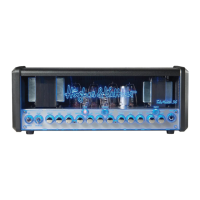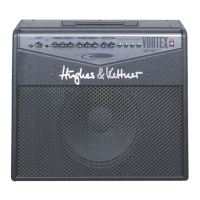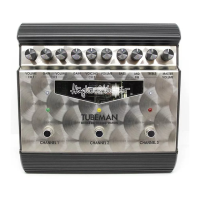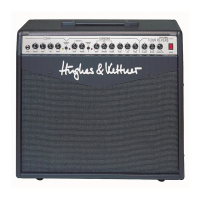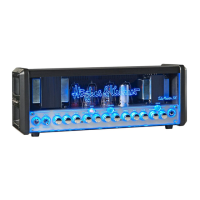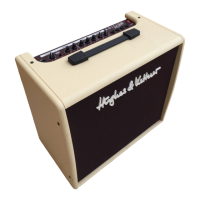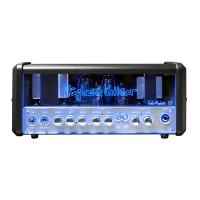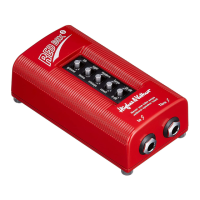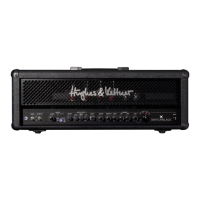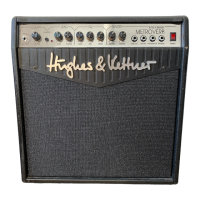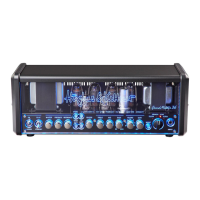
Do you have a question about the Hughes & Kettner Grand Meister 36 and is the answer not in the manual?
| Brand | Hughes & Kettner |
|---|---|
| Model | Grand Meister 36 |
| Category | Amplifier |
| Language | English |
Essential safety advice for product operation and user protection.
Information on electrical risks, water exposure, and unauthorized access.
Instructions for proper product care, cord maintenance, and handling.
Recommendations for optimal placement and operating environment.
Alerts about potential hearing damage from high sound levels and protective measures.
Conditions for maintaining the manufacturer's guarantee and product safety.
Crucial checks and procedures to perform before powering on the amplifier.
Steps for connecting speaker cabinets and powering up the amplifier.
Proper use of standby switch for tube longevity and warm-up.
Explanation of channel-specific knob assignments and programmable features.
How to select amplifier presets using MIDI controllers or footswitches.
Guide to managing presets and banks with the FSM-432 controller.
Using the Tap button to synchronize delay times with musical tempo.
Instructions for storing current settings into presets or overwriting existing ones.
Method to match physical knob positions with stored preset values.
Description of the clean channel's sound and features.
Details on the drive channel's overdrive and tonal range.
Information on the lead channel's compression and solo sound.
Overview of the ultra channel for heavy and distorted sounds.
Explanation of how Gain and Boost affect sensitivity and tone.
Understanding Bass, Mid, Treble, Presence, and Resonance controls.
Details on the digital reverb effect and its adjustable parameters.
How to access Delay and Modulation effects using the FX-Access button.
Explanation of controls for Delay Level, Feedback, and Time.
Description of Chorus, Flanger, Phaser, Tremolo effects and Intensity.
Using the serial FX-Loop for external processing units.
Using the non-programmable Master Volume for overall amp loudness.
Fine-tuning resonance and presence for desired tone.
Switching Resonance/Presence between global and preset-specific operation.
Connecting speaker cabinets and calculating total impedance.
Using Power Soak to achieve power amp saturation at reduced volumes.
Controlling the noise gate's response using its sensitivity knob.
Choosing between classic and modern cabinet emulation types.
Details on Line Out, FX Send, and FX Return jacks for signal routing.
Tips for effectively routing external effects through the FX loop.
Understanding LED indicators for tube status and fault detection.
Procedure to check individual tube bias points using LEDs and a pick.
Connecting MIDI controllers to the amplifier's MIDI In port.
Using MIDI Out/Thru to forward signals to other MIDI devices.
Configuring the MIDI channel and enabling/disabling Omni mode.
Understanding how Channel LEDs represent the selected MIDI channel.
List of amp parameters controllable via MIDI Control Change messages.
Steps to restore the amplifier to its original factory default settings.
Details on tube types and the amplifier's output power rating.
Technical data for various input and output jacks.
Information on the amplifier's physical size and mass.
